Saturation
Overview
Saturation can be used to add subtle warmth or intense distortion to a vocal track. The Saturation module features seven different modes for accentuating harmonics and adding unique color and character to a vocal.
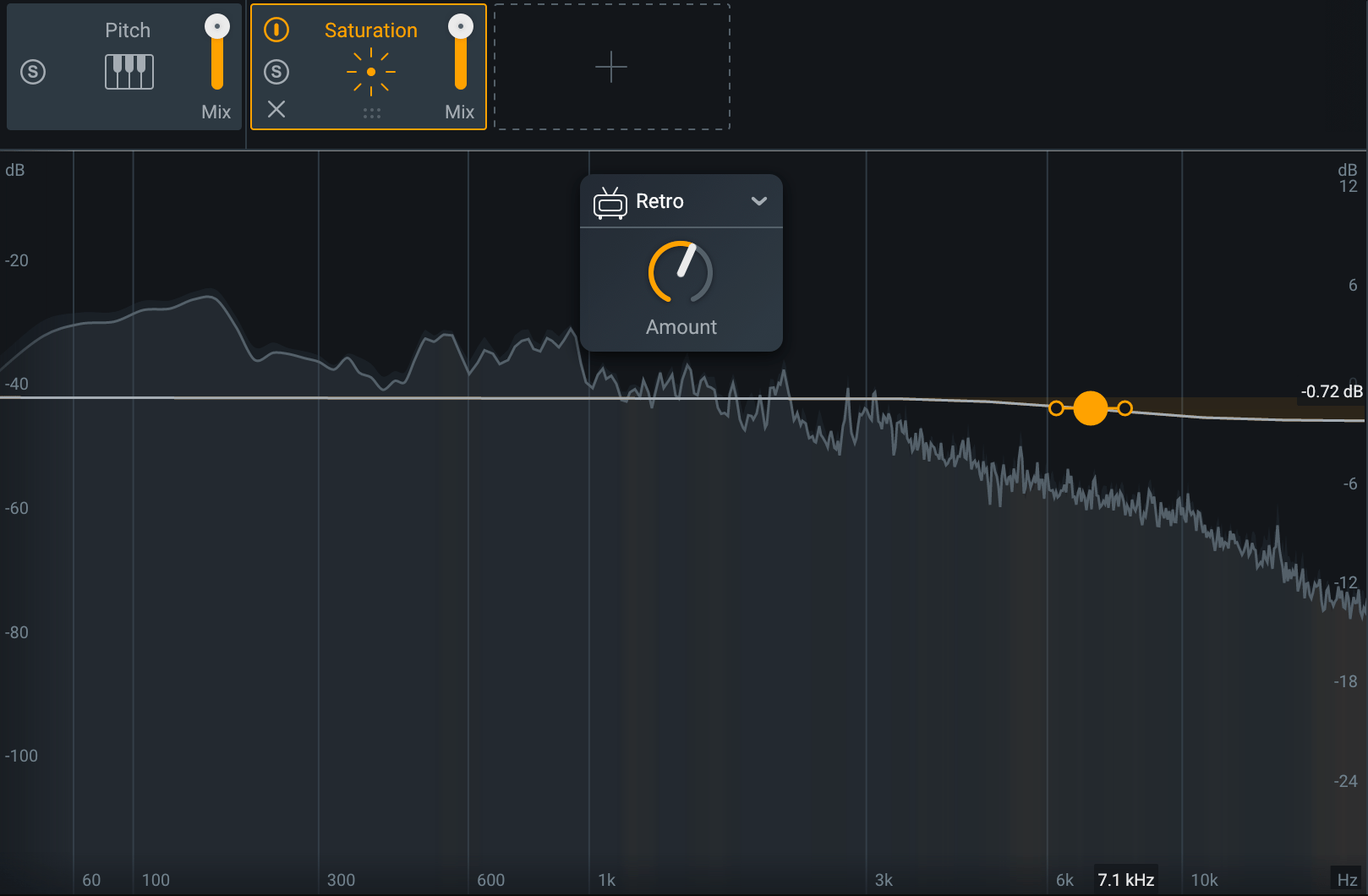
Controls
The following parameters are available in the Saturation module panel:
Mode
Determines the type of saturation applied to the signal.
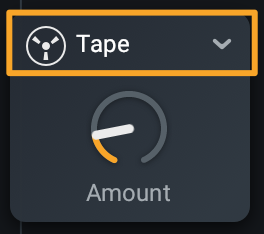
The following table outlines the sonic characteristics of the different saturation modes.
| Mode | Characteristics |
|---|---|
Analog 
|
Mild, gritty distortion. Transistor type emulation with emphasis on odd harmonics. |
Retro 
|
Sharp, aggressive distortion. Based on a row of odd harmonics that are characteristic of transistors. |
Tape 
|
Classic, analog tape saturation. Emphasizes odd harmonics but with a shorter harmonic slope than that of a transistor-type saturation. |
Tube 
|
Rich, tonal excitation. Emulates tube saturation with a mix of odd and even harmonics. |
Warm 
|
Subtle, harmonic warmth. Generates even harmonics with a steep slope. |
Decimate 
|
Unique, digital decimation. Reduces sample rate to introduce distortion artifacts introduced by aliasing. |
Distort 
|
Aggressive, dirty saturation. |
Amount
Determines the amount of drive applied to the selected saturation mode.
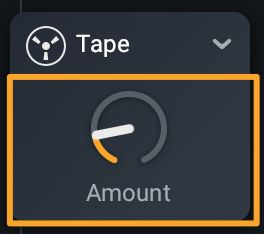
Post Filter
Allows for the reduction of undesirable high frequency content in the processed signal.
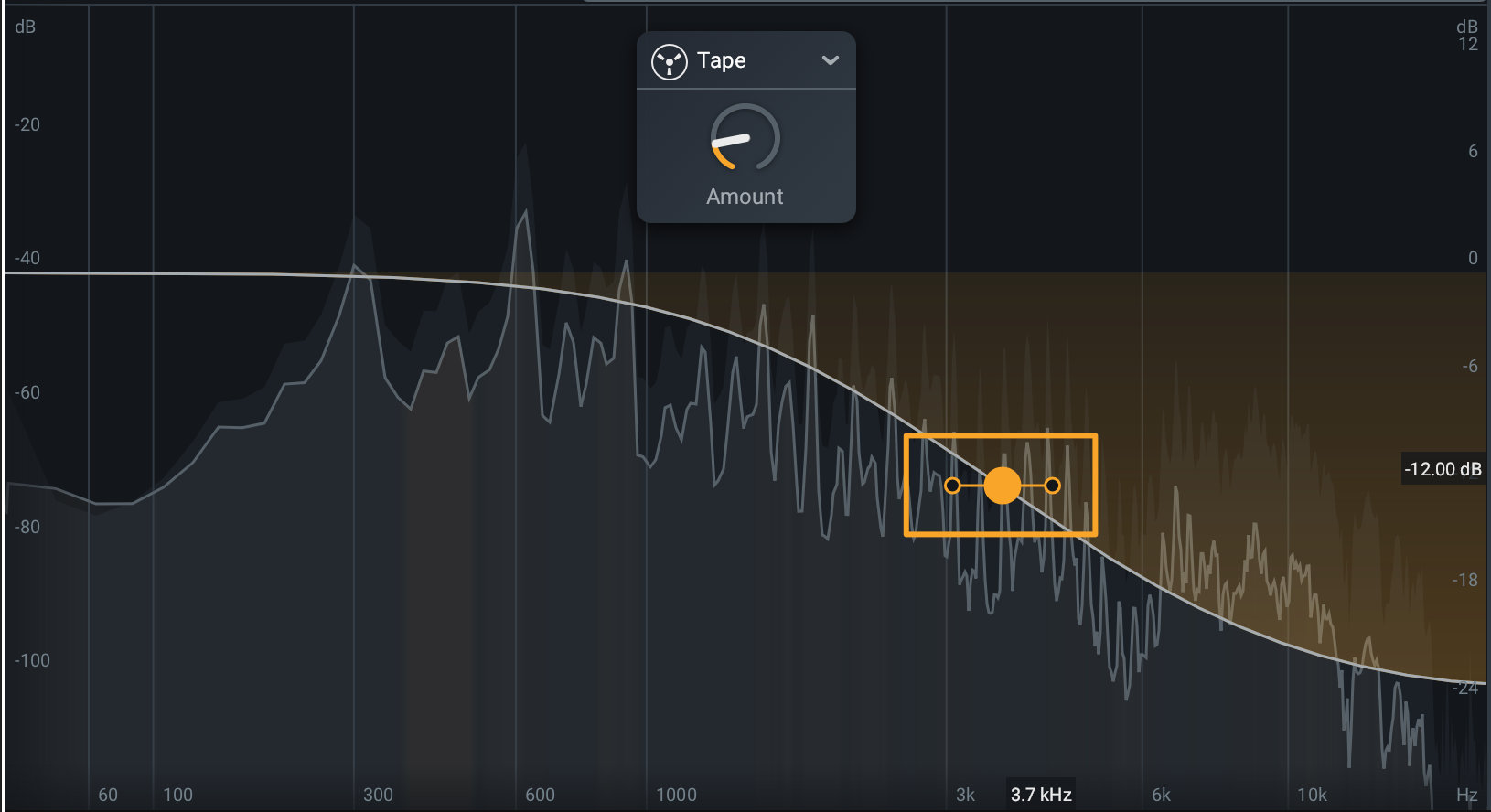
Post Filter Notes
- The high shelf filter in the Saturation module is only applied to the wet (processed) output of the module.
- Click and drag the filter node up and down to adjust gain.
- Click and drag the filter node left and right to adjust frequency.
Global Module Controls
The module chain features common controls for each module, including Bypass, Solo, Remove, Reorder, and Wet/Dry Mix.
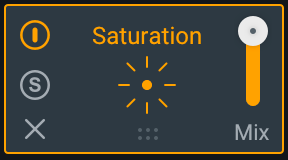
Global Controls Chapter
To learn more about the module chain and other global controls in Nectar 3, visit the Global Controls chapter.
Meters
The Saturation module features two spectrum analyzers and a harmonic highlight display for monitoring the effect of processing.
Spectrum Analyzer
Displays the magnitude (level) of a signal across the frequency spectrum in real-time. The vertical ruler on the left edge of the module panel measures the amplitude of the signal in decibels (dB). The horizontal ruler along the bottom edge of the module panel measures frequency in Hertz (Hz).

Two spectrum analyzers are displayed in the Saturation module: the input to the Saturation module (displayed in dark grey) and the output of the Saturation module (displayed in light grey).
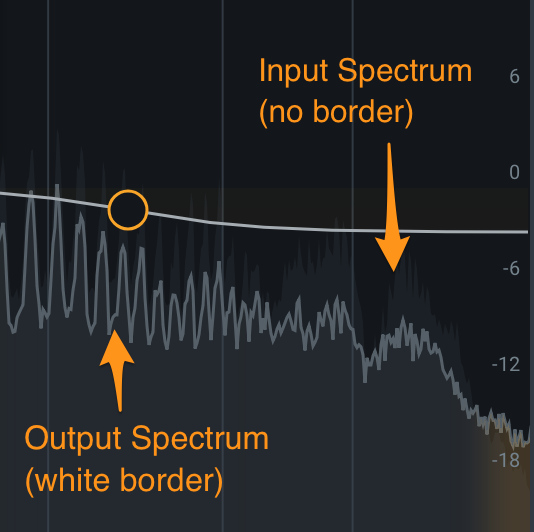
Harmonic Highlights
The harmonic content that is generated and added by the Saturation module is represented by the yellow fill color that appears when playing back audio.
